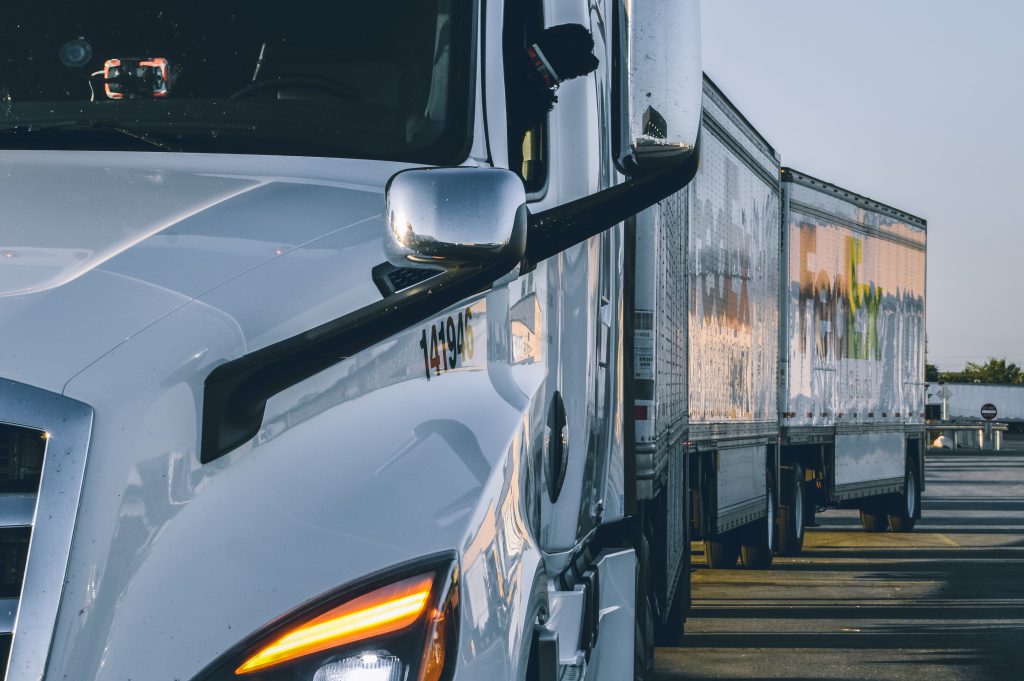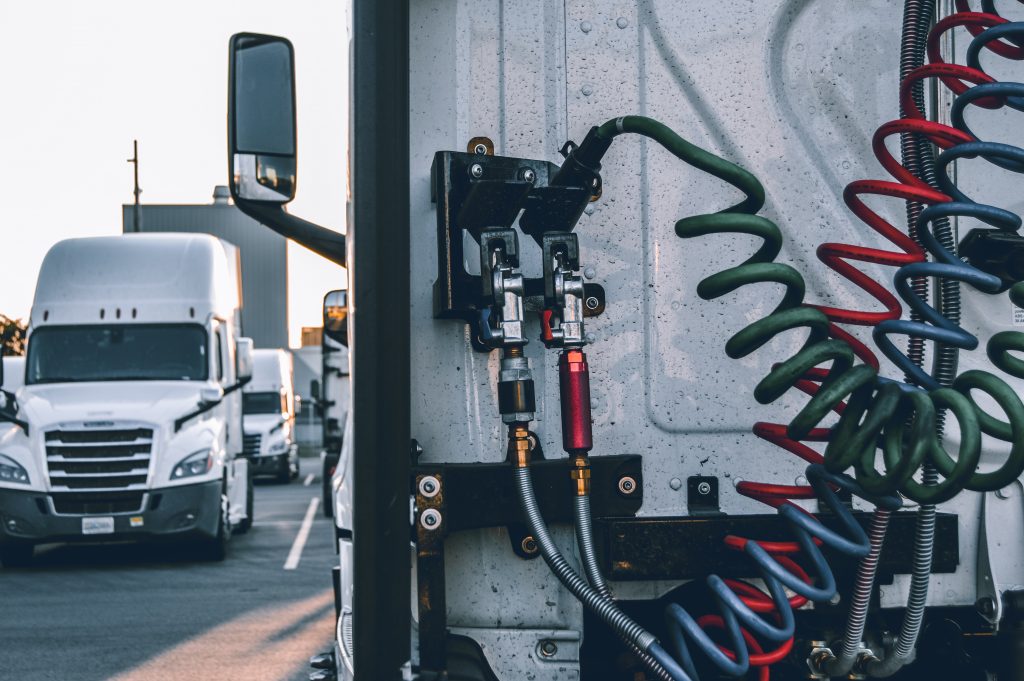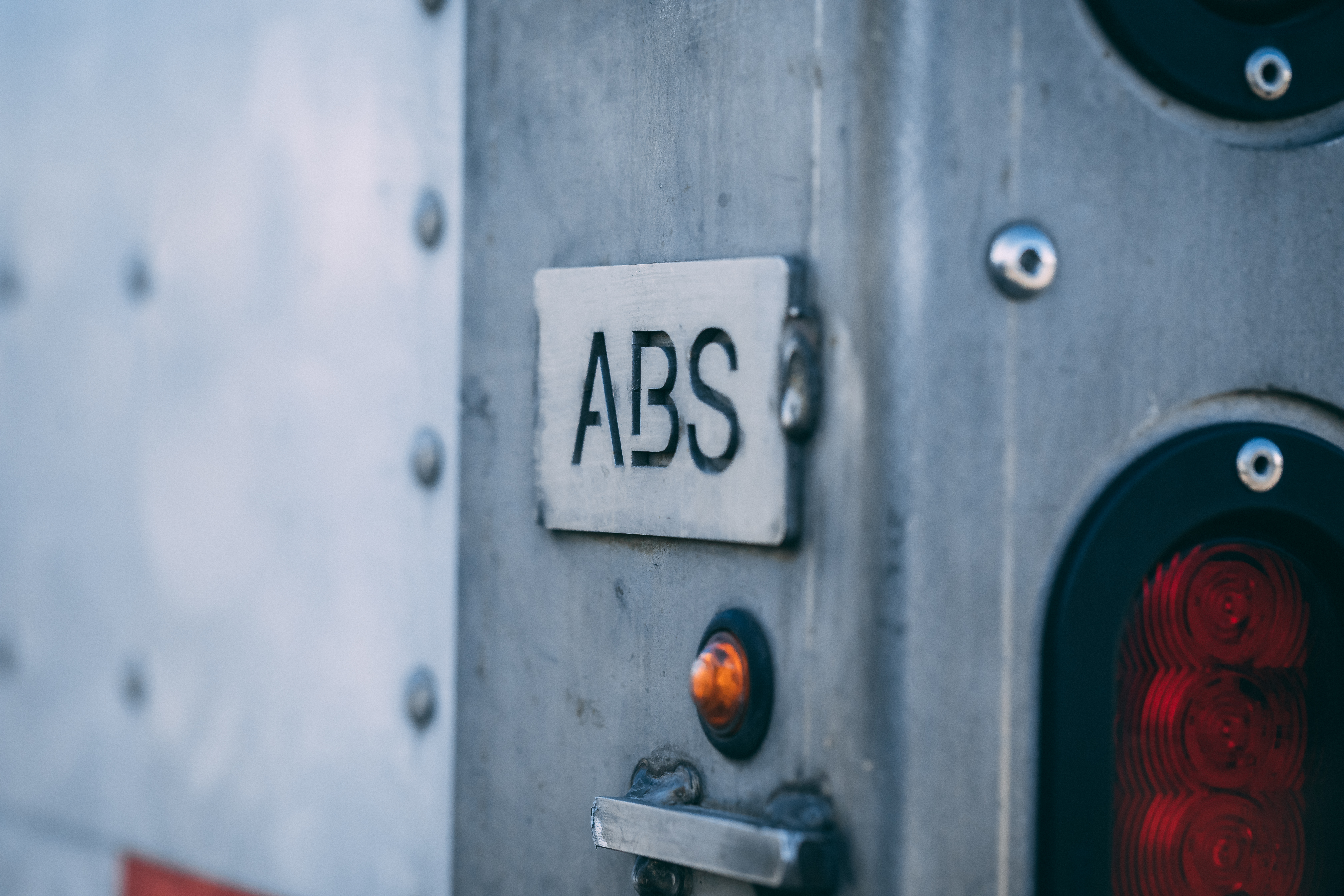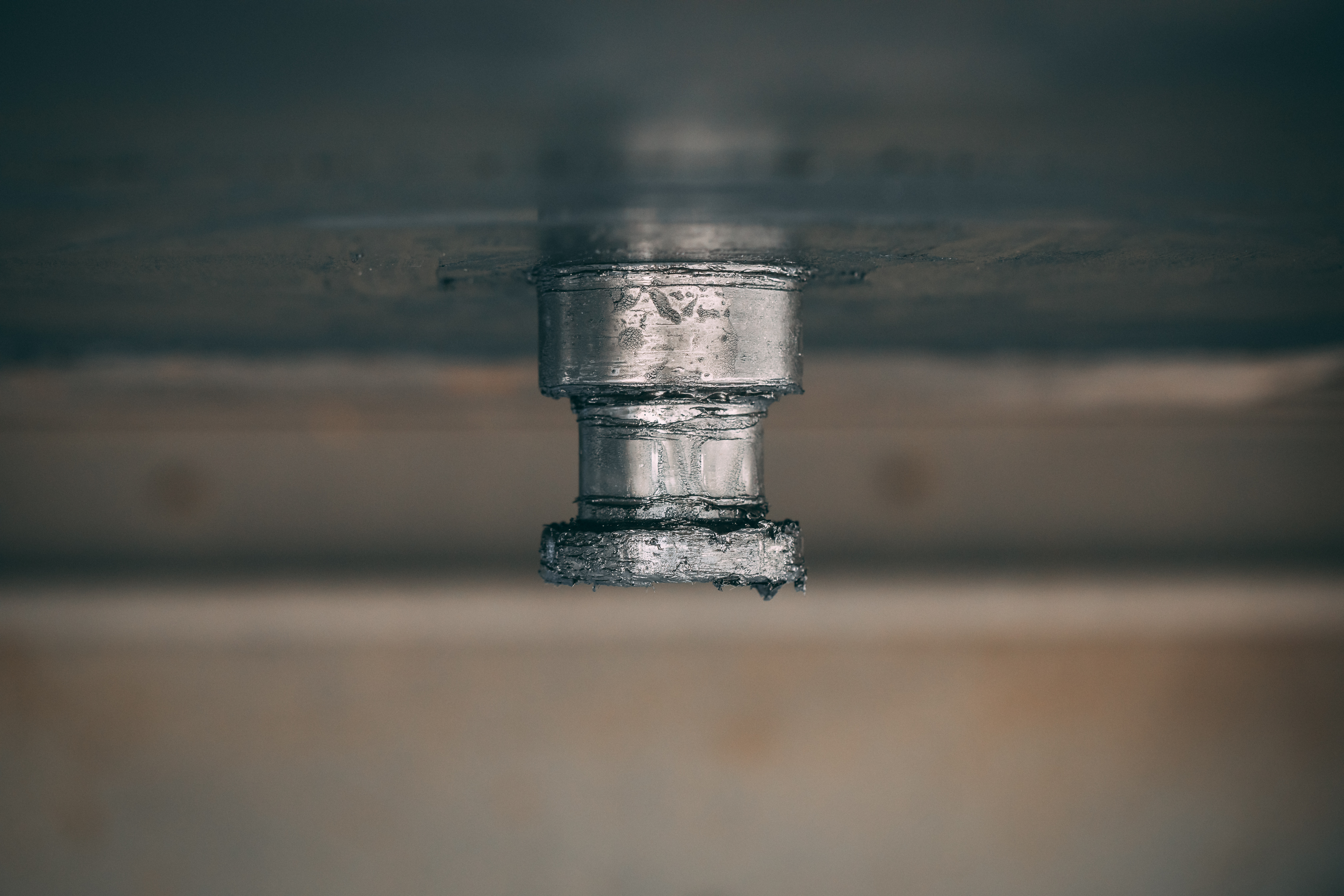Driving Combinations
1. Roll Over Risks
- More than half of truck driver crashes result in death from roll over accidents.
- The more cargo weight loaded higher into a trailer, the higher the center of gravity will be from the road, increasing the roll over risk.
- Fully loaded rigs are 10 times more likely to roll over than empty rigs.
- Keep cargo low to the ground, while also centered and spread evenly on the trailer.
- Drive slowly around turns, and make slow lane changes.
2. Steer Gently
- “Crack the whip” effect: reward amplification of a trailer’s momentum caused by sudden movement leading to roll overs, and swinging trailers.
- Steer gently, and smoothly. Avoid sudden lane changes
- Double 27ft trailers are 2 times more likely to roll over than a single 45ft trailer.
- Triple 27ft trailers are 3 times more likely to roll over.

3. Brake Early
- Empty combination vehicles take LONGER to stop than fully loaded combinations.
- Bobtails are very hard to stop smoothly, and take longer to stop than a fully loaded tractor trailer combination.
4. Railroad-Highway Crossing
- Examples of trailers with low underneath clearance
- Lowboy
- Car Carrier
- Moving Van
- Possum-belly Livestock Trailer
- A single axle tractor pulling a trailer with landing gear spaced back for a dual axle tractor can also get caught on raised tracks
- If stuck look for emergency signal information (posted DOT number of track crossing, signal housing, etc.), call 911, and use landmarks to identify crossing.
5. Prevent Trailer Skids
- Braking hard can cause your trailer wheels to lock up.
- You will see the first signs of a skid in your mirrors where your trailer will travel out of your lane, and the tail end will come toward you.
- DO NOT use your trailer brake valve (if equipped) if your trailer begins to jack knife. The trailer wheels locking up is what caused the skid, using the trailer brake valve to “straighten out the rig” is not going to help the situation. You need the wheels to roll again to regain traction.
- If you begin to jackknife, steer into the skid (counter steer). If the trailer is coming at you from the left side, turn towards the left (toward the trailer coming at you).
6. Turn Wide
- Off-tracking: When a tractor trailer combination goes around a curve, the trailer will follow a different path than the tractor.
- When turning do not swing to the left (right turn) or right (left turn) when initiating a turn. Go forward the distance needed to safely complete the turn, while keeping the tail end of the trailer (or trailer set) close to the curb to prevent vehicles from trying to turn simultaneously as you.

7. Backing With A Trailer
- When backing with a trailer you will be turning the steering wheel opposite of what you normally would with a single vehicle.
- In a single vehicle you would turn the top of the wheel in the direction you want to go.
- When backing with a trailer in a curved path, back toward the DRIVER’S SIDE.
- When backing:
- Look at your path of travel (Get out and walk around the vehicle)
- Check mirrors
- Back slowly
- Correct drift as soon as you detect it.
- If drift is too much to correct, pull forward to straighten out.
Combining Vehicle Air Brakes
1. Trailer Hand Valve
- Sometimes referred to as the trolley valve or Johnson bar
- Should only be used to check trailer brakes, and not while driving.
- Using the trailer hand valve while driving could cause the trailer brakes to lock up possibly causing you to skid into a jackknife.
- Do not use as parking brakes
2. Tractor Protection Valve
- The “trailer air supply” valve in the tractor, allows you to open and shut the tractor protection valve.
- If the tractor protection valve is closed it will keep air from leaving the tractor in the event or a bad leak or a trailer break away, ensuring you still have braking capacity.
- Once the tractor protection valve closes and air is no longer leaving the tractor, it lets air out from the trailer emergency line, applying the emergency brakes.
- If air pressure drops between the ranges of 20-45 psi the tractor protection valve will automatically close.
3. Trailer Air Supply Control
- On newer vehicles it is a red eight sided knob.
- Push in to supply air to the system, pull out to shut the valve and apply emergency/parking brakes.
- The valve will pop out automatically if air pressure drops between 20-45 psi, thus also closing the tractor protection valve.

4. Trailer-Air Lines
- Service Air Line (BLUE)
- Controlled by the foot brake or trailer hand valve, that are attached to relay valves that allow trailer brakes to be applied more quickly than otherwise possible.
- Pressure applied to the braking mechanisms causes a reciprocal change in air pressure in the service line.
- Emergency Air Line (RED)
- Supplies air to the entire system (single trailer, multiple trailers and dolly, etc.)
- Controls the emergency brakes
- Loss of air pressure in the system causes the emergency brakes to apply.
5. Hose Couplers (Glad Hands)
- Glad hands are devices on the end on your air lines that allow them to be connected to other equipment.
- They have a rubber seals (rubber grommets) that prevent air from escaping the system and keeps dirt and water out.
- The hook glad hands you need to set them at a 90 degree angle to each other and twist to lock.
- If you accidentally cross the lines (hook red to blue, and blue to red)
- If it is a newer trailer with spring brakes (after 1975), you will not be able to move. There will not be any air supplied to the trailer to release the spring brakes/parking brakes.
- If the trailer is older (before 1975) and does not have spring brakes, nothing will stop you from moving initially, but your trailer will not have any brakes.
- When no in use the glad hands need to be stored away properly, on dummy handles or sometimes locked together, to keep the airlines clean from debris.

6. Trailer Air Tanks
- All air tanks are filled by the emergency air line.
- Air pressure from the tanks are sent to the brakes through relay valves.
- Drain your air tanks everyday to keep the airlines clean and clear.
7. Shut-off Valves
- Shut off valves are used on specific trailers that can have other equipment attached to it.
- Shut off valves can be opened to provide air to multiple trailers, or closed to keep air from escaping the system if not other equipment is attached.
8. Trailer Service, Parking and Emergency Brakes
- Trailer built before 1975 do not have spring brakes but instead have emergency brakes.
- No parking brakes
- Brakes are held by air in the system, when air leaks away trailer will roll freely and should be held by wheel chocks if parked.
Anti-lock Brake Systems
1.Trailers Required to Have ABS
- Trailers and dollies built on or after March 1, 1998 are required to have ABS
- Trailers and dollies are equipped with a yellow ABS malfunction lamp on the left side of the front or rear corner.
2. Braking with ABS
- ABS adds to your normal brakes, but does not change normal braking capacities.
- ABS helps you keep the vehicle under control during hard braking events by preventing wheel lock up.
- Having ABS on just the trailer, or even a single axle, provides you with more control over the vehicle when braking.
- With ABS brake as you always have.

Coupling and Uncoupling
1. Coupling Tractor-Semitrailers
- ALWAYS back straight under the trailer.
- Before backing under a trailer check the trailer height.
- This will prevent you from running into the trailer if it is too low, and high hooking if it is too high.
- When coupled
- Make sure there is no light between the fifth wheel and the trailer.
- Check that the locking jaws are around the kingpin of the trailer, the fifth wheel pin is in the locked position, and if equipped the safety latch is over locking lever.
- Hook up electrical line and air lines (red to red, blue to blue)
- Raise landing gear FULLY.
2. Uncoupling Tractor-Semitrailers
- Always pull out from under a trailer straight and not at an angle.
- Put on parking brakes or tractor and trailer.
- Roll down landing gear
- Disconnect air lines and electrical line
- Release locking jaws of fifth wheel by pulling the fifth wheel release pin.
- Get back in tractor and release tractor brakes, slowly pull out from under the trailer

Inspecting Combinations
1. Combination Vehicle Brake Check
- Check Air Flow
- Charge air system and then press in the “trailer air supply” knob (usually red), supplying air to the trailer system through the emergency line.
- The check, open the emergency line shut off valve on the last vehicle of the combination. There should be air escaping, if not check to make sure all the shut off valves are OPEN between the vehicles.
- Pull the trailer handbrake down (if equipped) to check the service line, leave it engaged and walk to the last vehicle in the set and open the service valve. There should be air escaping, if not check to make sure all the shut off valves are in the OPEN position.
- If air does not flow to all vehicles, then the brakes will not function.
- Tractor Protection Valve
- Chock wheels.
- Charge the air system.
- Push in the “air supply” knob (tractor protection valve).
- Shut the engine off, turn the accessory on.
- Fan the brake pedal.
- The knob should pop out when the air pressure falls in the 20-45 psi range.
- Trailer Emergency Brakes
- Charge the system, and check that the trailer rolls freely.
- Stop and pull out the tractor protection valve, pull gently against trailer to check if the brakes hold.
- Trailer Service Brakes
- Release parking brakes and roll forward slowly.
- Use the trailer hand valve to apply trailer brakes.
- You should feel the brakes apply.
(Brake Check video coming soon!)
Now that you have finished Combination Vehicles be sure to also study the General Knowledge and Air Brakes sections.



